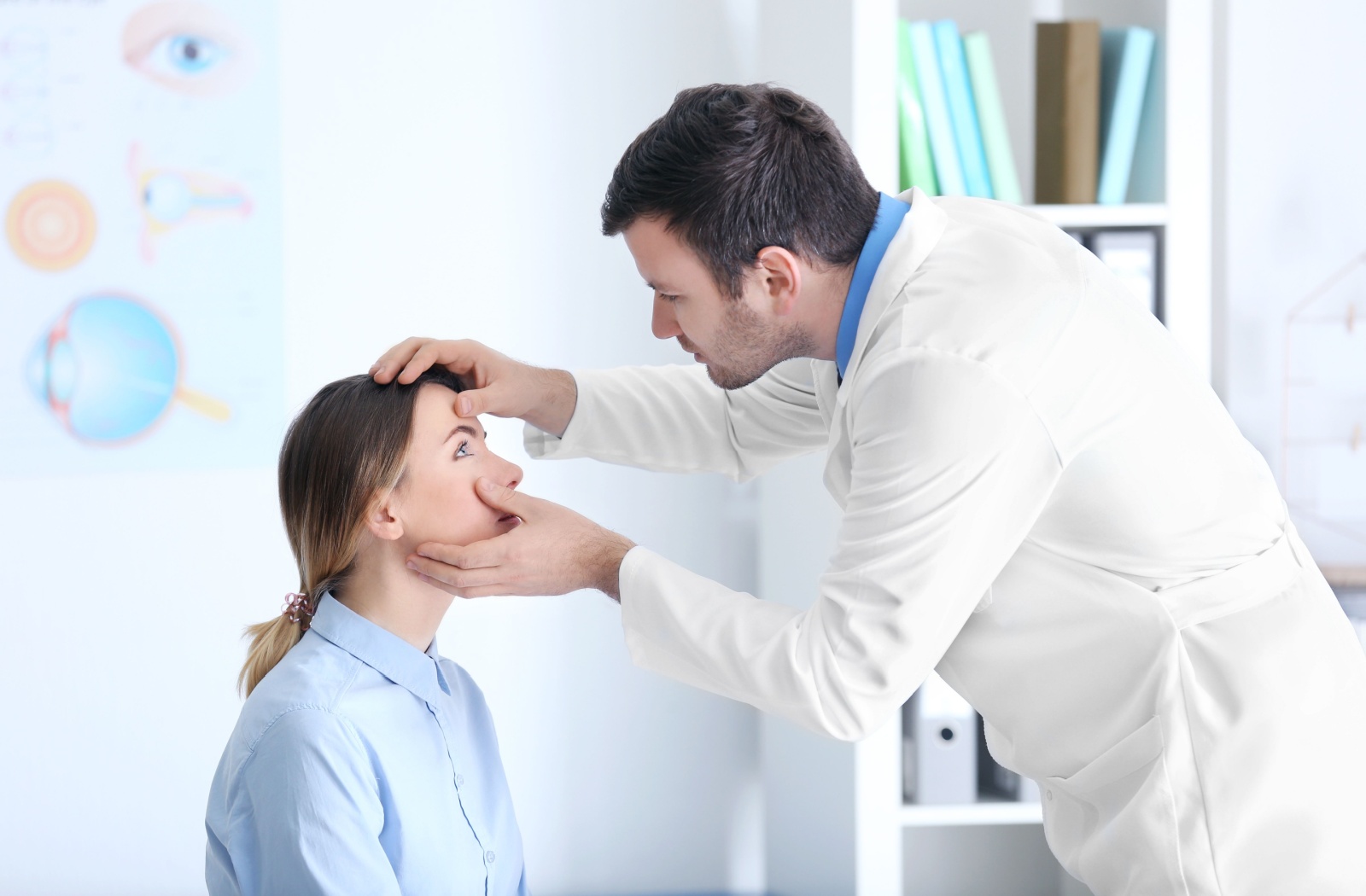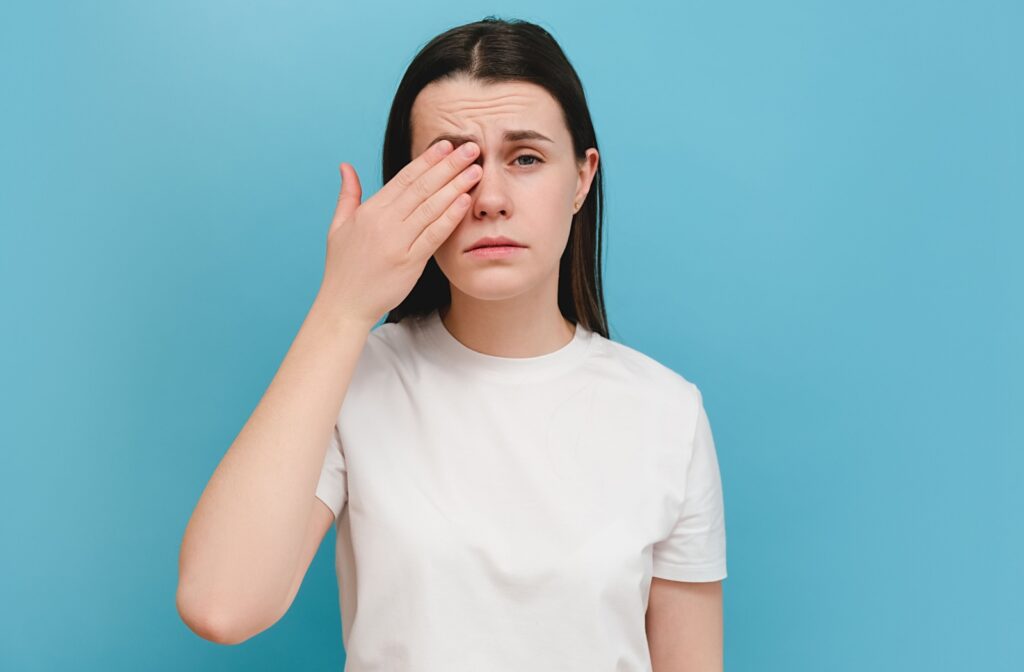Our eyes are supported by a complex array of structures that each play a unique role in maintaining good vision and eye health. Among these structures are our meibomian glands. These tiny glands, located along the edges of your eyelids, secrete oils that keep the eye’s surface smooth and hydrated.
A disruption in these glands can lead to irritating symptoms, including dry, itchy, or watery eyes. Meibomian gland dysfunction (MGD) is a chronic eye condition that can’t be cured but can be managed. With proper treatment, flare-ups may last a few weeks or less.
Leaving MGD unmanaged can lead to worsening symptoms with constant flare-ups lasting for months or longer.
A holistic approach to managing MGD offers a pathway for long-term relief from symptoms.
Is There a Cure for Meibomian Gland Dysfunction?
The first thing that you should know about MGD is that it’s considered a chronic condition. This means there isn’t a permanent cure—but you’re not doomed to suffer forever.
‘Chronic’ here simply means that the symptoms can return or persist over time. Fortunately, though, MGD can often be effectively managed with the right care and treatment plan.
All About Meibomian Glands
Your meibomian glands are tiny oil-producing glands along the edges of your eyelids. They play a crucial role in keeping your eyes hydrated and comfortable.
These glands release oils that prevent your tears from evaporating too quickly from the surface of the eye. Blockages or clogs in these glands disrupt oil secretion. Without sufficient oil, your eyes can feel dry, gritty, and irritated. That’s why meibomian gland dysfunction is one of the most common causes of evaporative dry eye (another chronic eye condition).
Blockages in your meibomian glands can stem from several causes:
- Thick oil secretions can slow or completely stop oil flow from the glands.
- Poor eyelid hygiene, makeup buildup, or even excessive screen time can increase inflammation around the glands.
- Certain skin conditions like rosacea or hormonal changes may impact the quality and consistency of oil production
How Long Can Flare-ups Last?
There’s no set timeline on how long MGD flare-ups can last, as every case can be different.
Within a few weeks of treatment, some people may notice improvement. For others, long-term relief may take months or longer and require consistent care and attention.
The reason symptoms last so long is that MGD tends to develop slowly. Blockages in the meibomian glands can take time to reverse. The good news is that, with early and effective treatment, symptoms can often be dramatically improved.
Several factors can cause MGD to worsen or stick around longer than necessary, including:
- Lack of treatment: Ignoring symptoms can allow the condition to escalate.
- Lifestyle factors: Prolonged screen time, dry environments, and poor nutrition can all contribute to issues.
- Underlying eye conditions: Pre-existing eye health issues can make MGD more stubborn.
Although most people find their symptoms mild or annoying, leaving MGD untreated can lead to more serious concerns over time. Chronic blockages in your meibomian glands can cause permanent changes to the glands themselves. This can result in long-term dry eye symptoms that are harder to treat.
That’s why early intervention and care are essential. It’s much easier to manage symptoms than to try to reverse years of accumulated damage.

Managing Meibomian Gland Dysfunction
Luckily, there’s a wide range of treatments available to manage MGD and improve symptoms for long-lasting relief.
The key is finding the right combination of treatments to meet your eye’s unique needs. After evaluating your symptoms your optometrist can help you find the right approach.
Our team at The Eye Gallery focuses on several treatments to help improve meibomian gland function:
- Warm compress masks: The gentle heat from a daily warm compress mask can help soften and loosen any blockages in your meibomian glands and improve oil flow. This simple, quick treatment can often be done before bed as part of a relaxing routine.
- Omega-3 supplements: Your eyes require a combination of vitamins and nutrients to stay healthy, and omega-3s are one of these. Known for their anti-inflammatory properties, omega-3s can help reduce blockages in meibomian glands and improve overall tear quality.
- TearCare: This in-office treatment uses gentle heat and pressure to unclog glands and restore natural oil flow. Once your eyelids are warm, a gentle massage breaks up any remaining clogs. Think of it as a targeted spa day for your eyelids!
- Intense Pulsed Light (IPL) therapy: This device delivers gentle pulses of light to the skin surrounding the eyes, improving oil flow and reducing inflammation. Most patients experience noticeable improvements after a few sessions!
Enter Your Eyelid Hygiene Routine
Most of us have a special routine for other areas of our wellness, like our skincare or physical exercise. Similarly, an eyelid hygiene routine can help manage MGD.
Gently cleaning along the edges of your eyelids daily (with a gentle cleanser or lid scrub) can help remove oil, bacteria, and debris that can clog your glands and minimize inflammation, thereby improving the quality of the oil your glands produce.
Building an eyelid hygiene routine doesn’t have to be time-consuming. The key lies in sticking with it.
Besides, an eyelid hygiene routine can work hand-in-hand with in-office therapies like TearCare or IPL. Think of it as a team effort—professional therapies provide a jumpstart to relief, and your everyday routine keeps your eyes feeling comfortable and refreshed in the long run!
Find Long-term Relief
Although meibomian gland dysfunction is a chronic condition, it doesn’t have to take control of your life. Working with your optometrist can help you find the right approach to long-term relief, tailored to your eye’s unique needs.
Connect with The Eye Gallery to schedule an appointment for MGD management.




